ANDREW OF CAESAREA:
Through this passage it is shown that the angels not only induce the worst plagues but also act as physicians, at one time cutting and at another time applying healing medications. For he who once brought on a plague to those who deserved it, now shows to the saint the beatitude of the church. And fittingly does he call the bride the “wife” of the Lamb. For when Christ was slaughtered as a lamb, he at that time betrothed [the church] with his own blood. For just as when Adam was sleeping, the woman was formed through the taking of the rib, so also the church, formed through the shedding of blood from the side of Christ as he was sleeping voluntarily on the cross through death, was united with him who suffered for us.1
ANDREW OF CAESAREA:
That he was “carried away in the Spirit” indicates that through the Spirit he was elevated in his mind from earthly things to the contemplation of heavenly realities. The image of the “great mountain” indicates the sublime and transcendent life of the saints, in which the wife of the Lamb, the Jerusalem above, will be made beautiful and glorified by God.2
OECUMENIUS:
“Its radiance,” that is, Christ “the sun of righteousness,” was “like a jasper.” Jasper has a certain green quality and so exhibits the life-bearing and life-giving nature of Christ, who “opens his hand and satisfies the desire of every living thing.” Indeed, green plants are the chief form of earthly food. The jasper was also like crystal and so symbolizes the purity and the holiness of Christ, for he “did no sin, and there was no deceit in his mouth,” as the prophecy of Isaiah says.3
CAESARIUS OF ARLES:
The twelve gates and the twelve angels are the apostles and the prophets, for as it is written, we “are built upon the foundation of the apostles and the prophets.” The Lord also spoke in a similar way to Peter: “Upon this rock I shall build my church.”4
CAESARIUS OF ARLES:
The city that is described is the church, which is extended throughout the whole world. There are groups of three gates on each of the four sides because throughout the four quarters of the world the mystery of the Trinity is preached in the church.5
ANDREW OF CAESAREA:
The four-sided form of the gates and their threefold entries signifies the understanding of the one who worships the Trinity. This understanding is throughout the four-cornered universe, and we have received it through the life-giving cross. For the cruciform shape of the position of the gates is according to the form of the twelve oxen that bore the Sea erected by Solomon. These oxen signify the threefold grouping of the apostles by fours, the herald of the Holy Trinity and the extension of the four Gospels into the four corners of the earth. Through this is symbolized the spiritual sea of baptism that cleanses the world from its sins and that was instituted by the spiritual Solomon.6
AUGUSTINE:
Now Jacob had been called in Scripture a man without guile. Jacob himself, as you know, was surnamed Israel. That is why in the Gospel, when the Lord saw Nathanael, he said, “Behold, an Israelite indeed in whom there is no guile.” And that Israelite, not yet knowing who was speaking to him, replied, “How do you know me?” And the Lord said to him, “While you were under the fig tree I saw you,” as though to say, “While you were under the shadow of sin, I predestined you.” And Nathanael, remembering he had been under the fig tree where the Lord had not been, recognized the divinity in him and answered, “You are the Son of God, you are the king of Israel.” Though he was under the fig tree, he did not become a withered fig tree; he acknowledged Christ. And the Lord said to him, “Because I said, While you were under the fig tree I saw you, is that why you believe? You shall see greater things than that.”
What are these greater things? “Amen, I tell you.” Because that man is an Israelite in whom there is no guile, look back to Jacob, in whom there is no guile, and recollect, when Jesus tells you, the stone at his head, the vision in his sleep, the stairs from earth to heaven, the beings coming down and going up; and then see what the Lord says to the Israelite without guile: “You shall see heaven opened”—listen, guileless Nathanael, to what guileless Jacob saw—“and angels going up and coming down”—to whom?—“to the Son of man.” 7
Footnotes
- COMMENTARY ON THE APOCALYPSE 21:9. Weinrich, W. C. (Ed.). (2005). Revelation (p. 363). Downers Grove, IL: InterVarsity Press.
- COMMENTARY ON THE APOCALYPSE 21:10–11. Weinrich, W. C. (Ed.). (2005). Revelation (p. 364). Downers Grove, IL: InterVarsity Press.
- COMMENTARY ON THE APOCALYPSE 21:9–14. Weinrich, W. C. (Ed.). (2005). Revelation (pp. 364–365). Downers Grove, IL: InterVarsity Press.
- EXPOSITION ON THE APOCALYPSE 21:12, HOMILY 19. Weinrich, W. C. (Ed.). (2005). Revelation (pp. 366–367). Downers Grove, IL: InterVarsity Press.
- EXPOSITION ON THE APOCALYPSE 21:13, HOMILY 19. Weinrich, W. C. (Ed.). (2005). Revelation (pp. 367–368). Downers Grove, IL: InterVarsity Press.
- COMMENTARY ON THE APOCALYPSE 21:13. Weinrich, W. C. (Ed.). (2005). Revelation (p. 368). Downers Grove, IL: InterVarsity Press.
- SERMON 89.5. Elowsky, J. C. (Ed.). (2006). John 1–10 (p. 85). Downers Grove, IL: InterVarsity Press.

